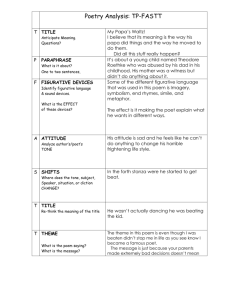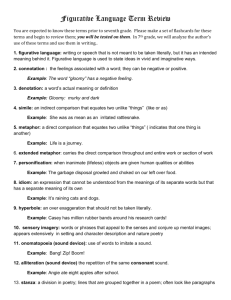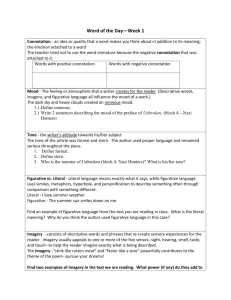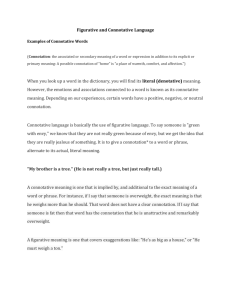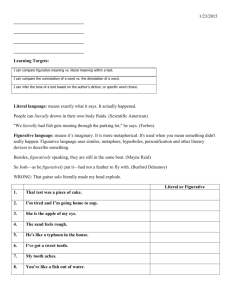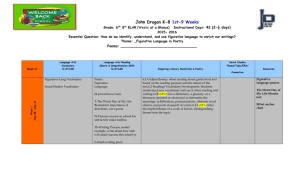“Exchange forgiveness with me, noble Hamlet:/ Mine and my father's
advertisement
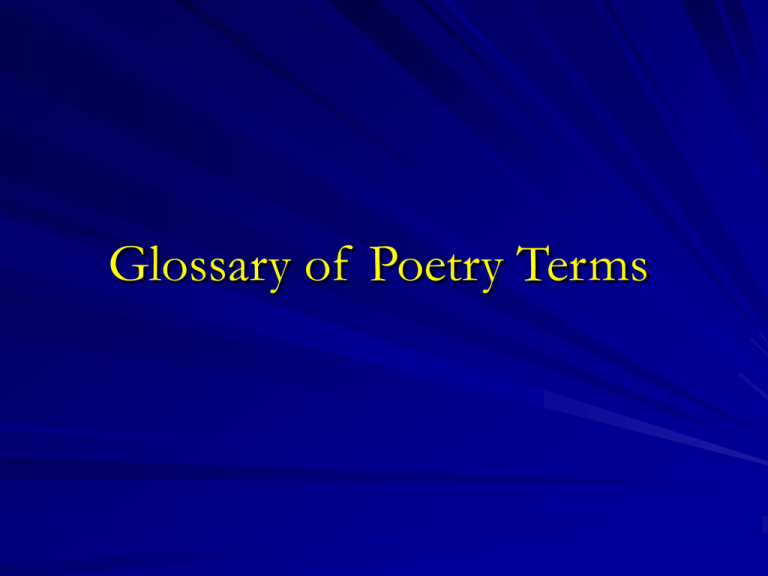
Glossary of Poetry Terms Alliteration The repetition of consonant sounds, especially at the beginnings of words (free, form, phantom). Caesura A strong pause within a line of verse or when poets use punctuation marks within a line of poetry. For example, “O could flow like thee, (punctuation or stop within the line) and make thy stream / My great example, as it is my theme!” Connotation Connotation is the range of secondary or associated significances and feelings which a word commonly suggests or implies. Which connotation that is evoked depends on the way a word is used in a particular context. Thus “home” denotes the house where one lives, but connotes privacy, intimacy, and coziness; that is the reason real estate agents like to use “home” instead of “house” in their advertisements. Couplet A pair of lines of verse, usually rhyming. Denotation The dictionary meaning of a word. Think back to connotation where “home” denotes the house where one lives. Diction The choice of vocabulary and of sentence structure. There is a difference in diction between “One never knows” and “You never can tell.”. Enjambement A line of poetry in which the grammatical and logical sense run on, without pause, into the next line or lines. For example, “O could flow like thee, and make thy stream / My great example, as it is my theme!” Figurative Language Words intended to be understood in a way that is other than literal. Thus lemon used literally refers to a citrus fruit, but lemon used figuratively refers to a defective machine, especially a defective automobile. Metaphor A kind of figurative language equating one thing with another: “This novel is garbage”; “Men are pigs.” The comparison never uses “like” or “as.”. Onomatopoeia Words (or the use of words) that sound like what they mean. For example, buzz, click. Personification A kind of figurative language in which an inanimate object, animal, or other nonhuman is given human traits. For example, “the creeping tide” where tide is imagined as having feet); “the cruel sea” (the sea is imagined as having moral qualities). Simile A kind of figurative language explicitly making a comparison – for example, by using “as” or “like” or a verb such as “seems”. Stanza A group of lines forming a unit that is repeated in a poem. Symbol A person, object, action, or situation that, charged with meaning, suggests another thing (for example, a dark forest may suggest confusion, or perhaps evil), though usually with less specificity and more ambiguity than an allegory. A symbol usually differs from a metaphor in that a symbol is expanded or repeated and works by accumulating associations. Theme What the work is about; an underlying idea of a work; a conception of human experience suggested by the concrete details. The message or lesson that the author wants to share with the reader..

